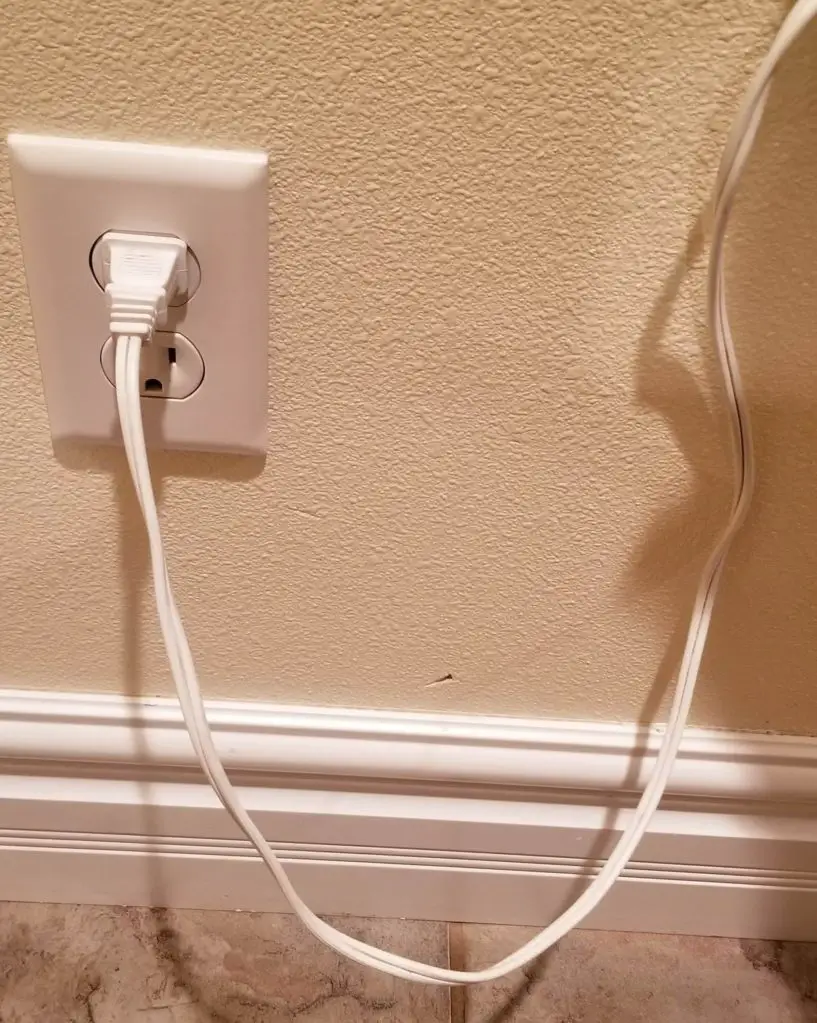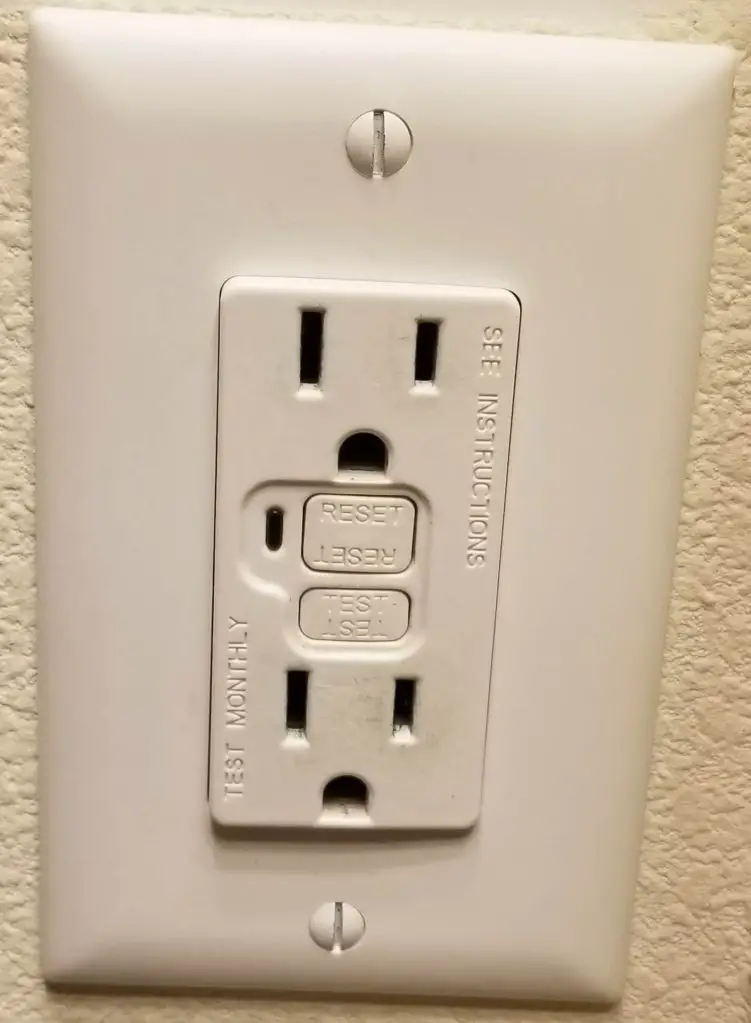
Aquarium electrical safety is something all reefers should be concerned about when setting up a system and keeping an aquarium long term. Simply stated water and electricity don’t mix and if you are caught in between the two it can be fatal. Electrical events can shock you, kill your fish, and even start a fire in your home. It may sound like a lot, but being aware of potential electrical issues and safety tips can go a long way to preventing a catastrophic electrical issue. Many safety measures are hardwired into homes these days, but being aware and taking the right precautions can reduce risk.
When I acquired my 210-gallon reef tank, I didn’t have a good spot to put the tank in any of the main living areas of my house so it had to go into our unfinished basement. My unfinished basement has a few lights throughout and only one outlet. Luckily the outlet was a GFCI outlet. I wanted to make sure that with the new large tank I was as safe as possible running through that single outlet so I researched the topic and found some great tips to make sure that I reduce the risk of a shock or house fire with the tank.
With that said please note that I am not a professional electrician and I offer the below tips as my opinion. I highly recommend consulting an electrician for an in-depth consultation on your home electrical system and options if you need to change anything to safely support your aquarium. Every home is different and it can get complex depending on the needs of your tank, other appliances in the room, and how your home’s electrical system is currently set up.
#1 Use Drip Loops on all Cords

Cords and cables are one-way avenues that water can travel down via gravity. Depending on where the cord ends or the point where the cord turns back up will be where any water on the cord ends. This can potentially be water traveling directly into the outlet or if a drip loop is present, just on the floor. Water directly into the outlet can trip breakers in the home, cause a fire, and poses an electrocution hazard. I’d much rather clean a little water off the floor than have to deal with a potential shock or shorting out a piece of equipment. If one of your outlets gets wet, you should try to turn off the breaker to the outlet and even consider turning off the home’s main circuit breaker. Usually, if an outlet gets wet you’ll want to consult with an electrician and potentially have the outlet replaced.
Drip loops are created when a cord comes from the tank or sump runs below the outlet and then back up to the outlet. Gravity works for us with drip loops where water can’t travel back up the cord to the outlet without some kind of assistance. Water can get onto cords very easily and happens from various sources such as splash from people or livestock in the tank, malfunctioning equipment, condensation, and leaks. In my 210-gallon tank, I have a large Blue Hippo Tang that occasionally will splash water outside of the tank with its tail. The potential exists for the Tang to splash onto the wires on the back of the tank and without drip, loops could run into outlets. I have my drip loops secured with screwed-in clips below outlets.
Drip loops are an easy prevention method and an aquarium keeper should build drip loop creation as a habit when installing and maintaining equipment and wires. Remember to use drip loops even when conducting variable activities like brewing saltwater. I occasionally make saltwater in Brute bucks and always make sure to install drip loops on the heater and powerhead in the bucket. Another good practice is to secure your drip loops when possible. Sometimes wires get shifted during maintenance or moving of equipment. There are various clips available that can be used to secure cables below outlets.
#2 Regularly Inspect and Replace all Equipment in the System
Saltwater is highly corrosive and over time will break down the best of equipment including power cords and the points where cords connect to equipment. The result can be power leaking into the tank where the cable is exposed or connections are loose. One of the most catastrophic failures I’ve had in my reef-keeping history was a powerhead leaking voltage into my 55-gallon origin tank after I removed and replaced it in the tank during maintenance. The powerhead killed most of the fish in the tank and gave me a good shock when I had my hand in the tank with it on.
Another habit to embed in your reef-keeping tool kit is to do a regular equipment inspection every time you maintain or clean it. You will want to check for any loose connections where the wire connects to the equipment and listen for anything loose within the device. Check the device’s cable to make sure that the cord isn’t brittle and the cable is not cut or has any exposed wire showing. If you find anything out of place it is best practice to remove the item from service and replace it. If you encounter any issue another tip is to contact the manufacturer of the item as it may be under warranty or they might be able to replace it for you.
#3 Do Not Pull Equipment by its Power Cord
Properly handling your equipment can help extend its life and help prevent electrical issues. The point where the power cable connects to the piece of equipment is usually a point of weakness and constant pulling or pressure at that point can further weaken it and potentially exposing it to water. I’ve seen many people while servicing their powerheads, remove the outside magnet and pull up on the power cord to remove it from the tank.
I’ve seen this also happen when people pull return pumps out of the sump. A best practice is to handle the equipment in a fashion where you maximize the point of contact between your hands and the equipment to secure it well. An example would be grabbing a protein skimmer with one hand on the skimmer’s body and another hand supporting the collection cup. Fully securing your equipment while handling it while also helps prevent you from accidental drops. I once dropped a full skimmer collection cup on the ground. The cup cracked needing to be replaced and I got skimmate all over the place . . . yuck.
#4 Turn Off All Equipment Power Before Sticking Your Hand in the Tank
This tip is a great tip to deploy and maximizes safety when servicing equipment inside the tank. However, it is one that I don’t believe any aquarium keeper adheres to 100% of the time. It is just too convenient for a person to stick a hand in the tank for a quick task. Cutting the power to each item in the tank is a strategy to greatly reduce the risk of shock and should be considered when working inside the tank. You can do this by unplugging each piece of equipment or cutting the power to the power strip. Another item to be aware of is the tank’s lights. You never want to risk dropping a light fixture into the tank while it is powered. Depending on your set up unplugging the light and removing it from the top of the tank is a best practice.
#5 Set Expectations with Other Members of the Household on Electricity Use Near the Tank
Depending on who you have in your home, you’ll want to make sure that the right expectations are set concerning general safety and electrical safety around the tank. I have two under 10-year-old kids that are inquisitive and rambunctious at times during play. I’ve set clear expectations with them they are not put anything inside the tank including themselves or be in the area behind the tank where the electrical is. My wife and I have been pretty diligent in the education of general electrical/outlet safety from a young age with our kids and putting tank safety on top of the outlet expectations was easy.
I’ve also let my wife know to not use high electricity items in the same room or outlets as the tanks. Things with heating elements or motors can pull a lot of electricity and potentially trip breakers. These items include hair dryers, vacuums, toasters, and power tools. It’s important to cover this with visitors too. One item of note is that outlets often share the same circuit breaker and sometimes it is not obvious or labeled which go outlets go with which of the homes circuits/breakers. My family was about to enjoy a Christmas raclette meal (a cooking device with mini pans that people around the table use to make individual mini pans of food) as soon it was plugged in a circuit breaker kicked and shut off one of our tanks. The outlet used for the tank was in another room.
#6 Know the Your Electrical Setup in Your Home
When keeping an aquarium or just living in a home, in general, it’s always a good thing to know the basics of your electrical system. First, you’ll want to know the location of your circuit breaker panel. The circuit breaker panel is where electricity is distributed across the various circuits within the home. The panel also hosts breakers that serve to interrupt the flow of electricity to the areas of the home when an irregularity is sensed such as an overload or short circuit. Usually, the breakers are labeled showing which breakers go to which areas of the home. Breakers can be reset by switching them on and off after they are tripped.
You’ll want to know where your panel is and how to turn off and reset breakers in the event of an issue at an outlet. My panel is located in my garage. Another item to know the location of is the main power breaker. This breaker can be used to cut power to all the breakers at once. This can be used or tripped when there is an overload of the entire system or for other serious problems. As stated earlier, it is not always easy to identify which outlets are connected to which circuit or breaker. You can find this out by plugging in something like a lamp and switching the breaker off until the lamp goes off. Once the lamp shuts off you can map that outlet to the corresponding breaker.
#7 Use Extension Cords Only Temporarily
Extension cords are meant to be used only temporarily. If you are using an extension cord permanently, it is a sign that you probably do not have the right amount of outlets or outlet locations for your aquarium’s needs. If using an extension cord temporarily there many safety concerns to consider including:
- Never cut the ground pin off an extension cord
- Make sure the cord is in good condition and is not damaged or has exposed wire, especially at its ends
- Use drip loops
- Do not use multiple extension cords in the same line
- Do not run the cord through any water at any point
- Ensure the cord is the appropriate rating for the device you are powering
- Do not cover, staple, or tape an extension cord
- Discontinue using the extension cord if it feels warm or hot
#8 Use a GFCI Outlet

A ground-fault circuit interrupter or GFCI is a safety device that helps protect people from electrical shock. GFCI outlets are commonly found in areas near water sources within the home such as sinks, bathrooms, and kitchens. GFCI are typically integrated within an outlet and usually have a test and reset button on them. GFCIs work by monitoring electricity to an item and then cutting the power if it detects an interruption in power such as dropping an electrical device into the tank accidentally. The GFCI would sense this and cut the power before it reaches you. GFCI outlets have helped greatly reduce the number of deaths from electrocution since being used in homes. A lot of homes these days have GFCIs built into the circuit breaker at the breaker panel. It’s a good idea to inspect your panel to see if this is built-in on the circuit the tank is connected to. If it is built-in, you will commonly see a test button on the circuit breaker in the panel. If a GFCI outlet is not available where your tank is, one can be installed relatively easily by an electrician. There are other mobile options available where the tank’s power line can be plugged into the GFCI device before the outlet.

#9 Do Not Daisy Chain Power Strips
In a typical reef aquarium, there is a lot of equipment and it can be very tempting to simply connect one power strip to another to provide additional outlets for use. Plugging power strips into one another is often called daisy-chaining power strips. Daisy-chaining power strips are simply not safe and not worth the risk. Power strips are not designed to work this way and are an easy way to overload a circuit and potentially cause a house fire. Your home insurance may void coverage if you cause a fire due to daisy-chaining power strips.
#10 Know Your Outlets Capacity and the Load you Need to Draw
Knowing how much capacity the outlet you want to use for your aquarium and other devices is important to ensure that you do not overload the circuit. It’s important to know that capacity is not just the outlet, but the entire circuit which may have multiple outlets on it. A circuit could involve multiple outlets and other things like lights and even appliances that exist near or in the same room. A typical home circuit uses 15 or 20 amp which usually equates to 1800 or 2400 watts before the breaker trips. To know which outlets are controlled by which breakers one can plug an item into an outlet and shut off breakers until the device turns off. You can create a map of outlets and circuits by doing this activity. With continuous loads like an aquarium, you want to be fewer than 80% of the circuit load or 1440 watts for a 15 amp breaker. Depending on what you are using in the room it may not be feasible to have a tank on the same circuit. A single large window air condition or space heater has the potential to cap out a 15 amp breaker. Other factors can influence capacity including power strip ratings, the thickness of wires in the home, and the rating of extension cords if used. Putting too much through the lines can cause the breaker to be tripped or worse overheating and a fire risk.
The other item to know is the load you are demanding from the circuit. You can figure this out by checking the power label on each piece of equipment plugged into the circuit. The equipment label will typically tell you how many watts are used by the device. Sometimes you will need to do some conversions to get the exact watts (Amps X Volts = Watts) and/or convert to amps (watts/voltage = amps). Some online calculators can help you do this too. Another method is to buy a power monitor that you can plug a device into to get a real-time measurement of power being utilized by the device.
Once you know your capacity and each piece of equipment required, you can then plan to shoot for the goal of not drawing more than the 80% breaker capacity for continuous use. This may involve having an electrician upgrade a circuit’s capacity or putting devices on other circuits to level the load. Another strategy is to use low power usage items on the circuit. Led lights use much lower watts than typical bulbs and replacing the room lights with led lights and using led lights on the tank can help lower the load. DC pumps typically use fewer watts than AC pumps. If you know your capacity limit and usage, it makes it an easy decision on plugging in an electric device or not.
Have Fun and Enjoy Your Tank
As the adage goes, “An ounce of prevention is worth a pound of cure” is true when it comes to electrical safety with aquariums. The technology in home electrical has improved in leaps in bounds over the years and though inherently dangerous, the risks of electrocution and house fire have significantly dropped over the years. Use high-quality equipment, don’t overload your circuits, and continuously inspect and maintain all aspects of your aquarium. Knowing how your home electrical system works, planning your electrical needs, and practicing good safety habits will go a long way in preventing catastrophic electrical events from happening in your home and to your body.
